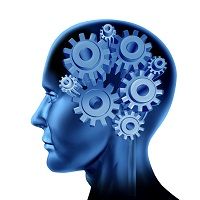Article
Brain Imaging Shows Cognitive Strategies Can Influence Food Cravings
Author(s):
Using a variety of cognitive strategies may help dampen food cravings and boost inhibitory control in individuals with obesity, according to a small neuroimaging study that draws methods from addiction research.

Using a variety of cognitive strategies may help dampen food cravings and boost inhibitory control in individuals with obesity, according to a small neuroimaging study that draws methods from addiction research.
Kathryn Demos, PhD, assistant professor of Psychiatry and Human Behavior at Brown University, presented her work at Obesity Week in Boston, MA on November 4, 2014. Demos and colleagues designed a study that used functional magnetic resonance imaging (fMRI) to identify the brain structures that are most active when participants were asked to look at tempting food pictures, and then employ a variety of cognitive strategies.
The strategies, which are also examined in addiction research, involve one of 4 mindsets. The first mindset, termed NOW in the study, simply involves focusing on the pleasure and satisfaction that would come from eating the pictured food item. The second mindset is DISTRACT, employing a technique used in cognitive behavioral therapy that encourages participants to think about or do something else when feeling a craving. The third condition, termed ALLOW, encourages subjects to acknowledge their craving in a nonjudgmental way and allow the feeling to come and go without judgment. Finally, a mindset of LATER had participants think about the long-term negative consequences of succumbing to a craving.
Twenty-five individuals who were overweight or had obesity were recruited to participate. They were presented an array of appealing photographs of food, and each participant selected the most personally tempting images to view during the study.
After training sessions and simulated scanning sessions, participants were presented with food images and asked to utilize one of the four strategies (NOW, DISTRACT, ALLOW, or LATER). The strategies were rotated within sessions in a blockwise fashion so changes during the transition from each state to the other could also be examined. Study subjects, who arrived fasting (no food for 3 hours preceding study), were also asked to rate their urge to eat on a 1-4 Likert scale after each block.
Each subject’s image analysis was refined by identifying the dorsolateral prefrontal cortex areas that were most active for that particular subject, rather than applying a uniform anatomic region of interest to all subjects, since there is considerable between-subject variability in this anatomic region. This is an area of the brain known to be associated with inhibition and impulse control, and felt to be important in understanding how people resist cravings.
As expected, participants reported that their urge to eat was highest after the NOW state, at 3.4+/- 0.5. ALLOW had the next highest level of craving, at 2.4 +/- 0.8, followed by DISTRACT at 2.0+/=0.7. Finally, LATER resulted in the lowest urge to eat, at 1.7+/- 0.7.
Examining fMRI images during the various states gave some indication of how the various strategies might work to reduce craving. While in the NOW state, participants’ brains showed activation of the ventral striatum, a region associated with pleasure and reward, as well as other brain regions associated with sensory and reward processing activity.
The ALLOW state showed some activation of the default mode network, a group of structures associated with a resting state and also activated in mindfulness training. The DISTRACT technique showed superior frontal cortex activation, indicating higher order processing (participants revealed they were often thinking about tasks and obligations during this state). Finally, when asked to think about long-term negative consequences (the LATER condition), participants’ brains showed dorsolateral prefrontal cortex activation, indicating inhibition.
Discussing conclusions and implications of this work, Demos noted that most weight management programs do not currently encourage participants to focus on long-term negative consequences of carrying excess weight. Demos and colleagues plan more study to extend investigation of this array of cognitive strategies into real-world behavior.





